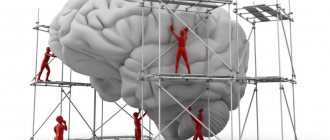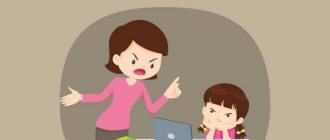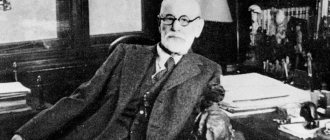11/25/20205 minutes read 926
Art therapy
(from the English art - “art” + therapy) - a direction in psychotherapy and psychology, based on the use of art and creativity in the treatment of psychological problems and diseases. The main goal of art therapy is the harmonization of the mental state, self-expression and self-knowledge, and the actualization of suppressed emotions. In the process of therapy at the symbolic level, a person can express and explore all his feelings, conscious and hidden: love, hatred, anger, envy, tenderness, joy, sadness, pain, etc.
Initially, this technique was used in the psychoanalytic school; its main mechanism is sublimation.
Sublimation is a protective mechanism of the psyche, which is the removal of internal tension by redirecting energy to achieve socially acceptable goals and creativity.
First described by Freud
Types of art therapy in modern psychology
Art therapy can be used both as the main method of treatment and as one of the auxiliary methods during complex therapy. Its main healing property is that a person, through creative activity, can express feelings that are difficult to formulate in words. Having created an image and seen it, he can interpret his emotions and resolve the conflict, transform negative emotions into positive ones, and find a way out of a disturbing situation.
There are many ways to express yourself, and you don't even need to know how to paint, sculpt or dance. Absolutely everyone can find for themselves the type of art therapy, from many directions, that will best solve the problem.
- Dance therapy
- Art therapy (drawing, collage)
- Fairytale therapy (bibliotherapy)
- Music therapy
- Puppet therapy
- Working with plastic materials - modeling techniques, sculpture, pottery
- Sand therapy
- Mandalotherapy
- Phototherapy
- Animation therapy, etc.
Art therapy exercise “Image of a goal” - Define your goal. Traditional: “I want a lot of money” is not a goal, but a means to achieve it. - Draw your goal. Work out all the details, take your time. - Now that it has become embodied, think about what you need to achieve your goal?
Is creativity worth healing?
As we can see, art therapy sessions can include different creative directions. If you contact a psychologist, he will help you navigate the choice of the method that is best suited for you.
You need to understand that art therapy is absolutely harmless and connects to a person’s subconscious, influencing the psyche gently and carefully. The patient not only receives genuine pleasure from creativity, but also is distracted from everyday problems, adapts more easily to social conditions, and becomes more emotionally protected and stress-resistant.
Art therapy shows excellent results in solving many psychological problems - age-related, personal, crisis.
All these facts suggest that it certainly makes sense to try such treatment. Many patients who have undergone this therapy claim that creativity opened up a real path to their soul, that regular exercises gave them an understanding of their true desires, changed their view of the world and themselves, and gave them the opportunity to feel like a creator who independently writes the script of their life.
Art therapy methods/techniques
- Art therapy is healing through creativity; this technique allows you to establish a connection between the subconscious and the conscious part of the psyche. The basis of the method is a metaphor that reveals the causes of psychological problems and difficulties. In the process of creativity, these reasons unconsciously come to the surface, and the person uses available materials to create their images, and then, under the guidance of a psychologist or independently, works with these images.
- Work can be done actively or passively. Active - an active creative process occurs: a person independently draws, sculpts or composes a fairy tale or story. Passively - the client listens to music or looks at a work of art, watches a film, and interprets the information, isolates what causes the greatest response, what constitutes the image of his problem.
- Art therapy methods can also be carried out in a group or individually. In a group, people can engage in joint creativity, work on a project together or individually within the framework of a topic given by the art therapist.
Lesson stages
The required stages of the lesson are:
- The introductory stage, at which the psychologist establishes contact with the participants, prepares people for the upcoming activity. The facilitator informs the group of the goals of this meeting and offers a choice of work techniques.
- Stage of direct creativity. At this stage, the group members are immersed in an atmosphere of creativity. Listening to themselves, their inner feelings, they are busy in the process of creating a masterpiece using one technique or another. The facilitator maintains feedback with the group through questions, resolving problem situations, and commenting on individual points.
- Stage of discussion of the process and result of the work. At this stage, participants demonstrate their work, share their impressions, ask questions to the presenter or answer his questions. The psychologist individually gives recommendations to each participant and sums up the lesson.
The purpose and objectives of art therapy
Therapy solves many problems in a very humane and safe way for humans:
- A socially acceptable outlet for aggression and other negative feelings. It is possible to express negative feelings without harming yourself or others. Modeling is especially well suited for these purposes.
- Facilitates the process of treatment (psychotherapy) as an auxiliary method. Therapy can be used as an auxiliary technique in the treatment of both psychological and somatic problems, for example, in case of heart disease, when it is necessary to overcome the patient’s anxiety after a heart attack.
- Provides rich material for psychodiagnostics. Absolutely everything that a person uses for creativity is interpreted by a psychologist, and subsequently by the patient themselves: the type of therapy, material, color, location of the drawing on the sheet, the size of the sculpture, even the inability to depict something, every detail related to the creative process - All this is material for diagnostics.
- Processing repressed thoughts and feelings. During the creative process, all repressed, hidden feelings begin to be recognized by the client.
- Therapist-client contact. This is especially helpful when working with children.
- Development of self-control.
- Concentration on sensations and feelings.
- Development of creative abilities. Both passive and active forms of art therapy develop creative thinking and increase sensitivity to art.
- Increased self-esteem.
Exercise “Doodle” 1. Draw a complex tangle of lines, meaninglessly and freely drawing on the surface of the sheet, using any tools (paints, pencils, pens, crayons). 2. Try to “see” a certain image in these scribbles and develop this image meaningfully - using the same colors (pencil) 3. Write a short story or give a detailed commentary on the resulting image.
Pros and cons of using art therapy
The advantages of art therapy include the fact that it is an inexpensive and accessible method. You can work on your own and make quite a lot of progress. This is a very good way to get to know yourself, cope with stress and negativity, identify goals, actualize problems and hidden emotions.
But like any working method, art therapy has its disadvantages:
- during creative self-expression, an uncontrolled explosive release of strong emotions is possible; if there is no experienced psychologist nearby, a person may not be able to cope with their influx;
- in some (rather rare) cases, negative character traits may worsen - narcissism, psychotic traits;
- rather than helping to connect with others, art therapy can promote deeper withdrawal;
- For some, this method is categorically not suitable and causes strong protest - usually this is a violent manifestation of the defense mechanisms of the psyche
What else should you pay attention to when choosing a psychotherapist?
To achieve a result, it is important not only the method that the therapist will use during the consultation process, but also your mutual sympathy and understanding - how carefully the specialist listens, accepts your problems and treats you with respect.
Another important point is the psychotherapist’s awareness of your goals and aspirations. If a specialist knows what you expect from therapy, he will have every opportunity to choose the method that is right for you to cope with your specific problem. Feel free to discuss this point if you feel that some of the proposed techniques are not suitable for you. If after this the doctor continues to insist on using his method, assures that you are resisting and are not interested in recovery, it is better to turn to another specialist.
Areas of art therapy
- Dynamically oriented
art therapy has its origins in psychoanalysis and is based on the interpretation of hidden thoughts and feelings extracted from the subconscious and materialized through the means of art. Every person, even a small child, is able to express an internal conflict in a visual (auditory) form, and then it is easier to explain and understand, and therefore solve.
- Gestalt-oriented art therapy.
The psychotherapist helps the client to understand and interpret experiences, restore the integrity of the “I,” and awaken spontaneity and vitality.
Art therapy for children
Therapy is recommended for children from 6 years old (some therapists can work with children from 4 years old) since at the age of 6 years the symbolic function of consciousness is still being formed, the child does not yet know how to abstract. The parent can be present at the session and be included in the process or occupy the position of an observer.
But for teenagers, this form of psychotherapy can be very useful; teenagers strive for self-expression, have already largely mastered the methods (drawing, modeling, writing), but cannot fully navigate their emotions, desires, and goals. Art therapy approaches are ideal for this age group. The parent is usually not present at the session.
Art therapy for adults
Every person can express themselves creatively, but the older we get, the more this magical ability is lost. Adults are crushed by routine and far-fetched prohibitions; they forbid themselves to dance, draw, and are afraid of getting dirty with clay or plasticine. Feelings are suppressed, thoughts are blocked, so physical, psychological and neurotic disorders arise.
By throwing out emotions on canvas or on the dance floor, people get rid of blocks, healing themselves with simple remedies from both psychological and somatic diseases. And what is important for adults in art therapy sessions is that no one is compared to anyone else, work is not evaluated - this is not a painting lesson.
Exercise “Avatar - the image of the soul” - Imagine any object that is most similar to you (plant, animal, inanimate object, whatever you can imagine). - Draw it however you like - draw it perfectly or sketch it out schematically. — It is important that this work reflects your current state. - Consider your image, reflect on it. Why did you choose this particular image? Where did these details, colors, decorations come from? What do you like most about the look? What's not to like? What would you like to change?
Art therapy for older people
In Europe and the West, art therapy of emotions is widely used among older and older people. Groups and centers are created for them, using therapy approaches that are accessible to everyone.
Maturity is a wonderful time when a person can completely surrender to his hobbies, stop running somewhere and start simply living. But this is also the time when you can fall into the state of “life without a goal.” The usual way of life of older people is crumbling, children grow up, parents begin to feel unnecessary, retirement begins and a lot of free time appears, and in order to find new meanings, energy and effort are required.
Art therapy methods provide an opportunity to discover your creative potential and find energy for living a life of pleasure.
How does a consultation with an art therapist work?
This can be either an individual consultation or group work. The session lasts from an hour to an hour and a half, and begins with elaboration of the request. The therapist will ask you what brought you here and what problems you want to solve. The psychologist will ask leading questions and use various approaches to help formulate the request and clearly define the problem.
A highly qualified therapist will never give advice or explain the problem for you; he can only help you explore the depths of your soul and move towards resolving the conflict. Also, an art psychotherapist will not explain to you “what is it that you drew,” only you can interpret your creativity.
How long does art therapy last?
It depends on the depth of the problem, and how long it has been bothering you, on the specific situation and the person himself. You need to understand that psychotherapy in general is a long process that can last from one meeting to six months and even several years.
Typically, these are weekly meetings, but at least once a month, and regularity is very important to achieve effective results. There are also short-term options - about 20 sessions. Everything is individual, but miracles do not happen, and it is impossible to solve problems that have been accumulating for 20-30 years in one meeting.
Is it possible to do it yourself?
On the Internet you can find many online lessons and self-help books on art therapy. None of this will replace sessions with a qualified specialist, but it certainly won’t do any harm and will most likely help reduce anxiety, learn a little more about yourself, throw out negative emotions, increase self-esteem and simply be happy (as you know, creativity stimulates the release of dopamine).
You don't have to draw if you're not drawn to it. Make a collage of your favorite poems, a “self-care” box (put everything that lifts your mood in it), sign up for a pottery class, buy an anti-stress coloring book. After all, numerous psychologists note that the very presence of a hobby can significantly improve the quality of life.
Where can I learn about #drawing?
Well
Social art therapy
February 3, 2022 – January 31, 2021
Well
Drawing, Painting, Composition
February 3, 2022 – June 30, 2020
Well
Do-it-yourself cartoon - animation for beginners (online course)
August 19, 2022 – August 23, 2019
Where can I learn about #dancing?
Seminar
Hustle dance master class
5 Aug 2022 at 20:30
Seminar
Laboratory “Improvising Life”
8 Aug 2022 at 19:30
Where can I study on #Acting?
Well
What results can you expect from a consultation with a psychoanalyst?
Therapy has a beneficial effect on a person’s psychological and emotional background. Using this technique, you can resolve internal conflicts and achieve harmony and your own psychological peace.
Here are the main results that clients of art therapists achieve:
- awareness of emotions and feelings and their deep elaboration;
- resolving internal psychological conflicts in a way that is safe for the person and others;
- knowledge of hidden driving motives;
- relief of emotional pain;
- discovery of new personal resources;
- updating goals and ways to achieve them.










